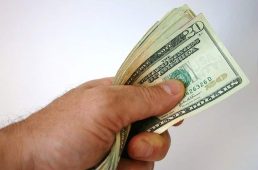Rarely can we clearly point to a single moment or event that will change the way we read history clearly and inhibitedly.
Such was one evening in the middle of the winter of 1984 when a young man with an honors degree in art history from Princeton, and almost a master’s degree in economics from the London School of Economics, named Michael Lewis, was invited to dinner with Her Majesty The Queen. The invitation came to him through a distant cousin who married into a German noble family, and the young man, unaccustomed to events of this rank, had to rent a black tie and make his way by subway to the royal palace. It quickly became clear that the evening was actually a huge fundraising event attended by about seven hundred investment bankers, two of their wives and young Michael – who knew all this because the hand of fate sat him between the two women.
By the end of the evening, one of the bankers’ wives had given Michael an impromptu job interview and so he was parachuted straight into the legendary Salmon Brothers trading room. He would later abandon the job in disgust and publish his experiences in a book “Poker Liars” that would become a milestone in the balance of power between investment bankers and policymakers and ordinary people. Michael Lewis’ first book dispersed the heavy smokescreen that until then had separated the financial and derivatives industry from anyone not involved in the field, and was the closest thing to an explanation for the severe crisis that struck the markets in the 1980s. Lewis did not hesitate to point to traders as to blame for the crisis while taking risks at taxpayer expense and fostering a vulgar culture of power detached from what was happening outside the trading rooms. Lewis recalled that he thought he was writing a period work about America in the 1980s that would one day read his description as an unusual and unusual case in which “a great nation went out of its financial mind.” But then he found himself describing the high-tech bubble of the late nineties, and the collapse of the PIGS countries in Europe, and finally, after a short break in which he dealt with innovative sports models, he was again asked to describe and explain one of the greatest crises of the twentieth century – the subprime mortgage crisis that broke out in 2008. This is actually an in-depth investigation of the complex mechanisms that enabled this terrible risk neglect. The psychological and structural failures that encouraged the creation of the bubble and planted the crisis bomb with fictitious billions of dollars.
The book has now been reissued in a new edition on the occasion of the release of Matching Cinema, a film that also won an Oscar for Best Adapted Screenplay. In order to unite the endless characters who worked behind the scenes of the crisis and give the plot a romantic-American aspect, Lewis focuses on those few people who foresaw the crisis and gambled big on it, a sweet and sour bet because the fulfillment of their prophecy gave them legendary wealth and at the same time rendered millions of Americans homeless and unemployed. To a certain extent, Michael Lewis remains that confident young man who looks at the economic markets through the eyes of an art historian and manages to touch the common man in his writing, while at the same time delivering a poignant and genuine critique of an entire industry, an industry that is forced to change its face in no small part thanks to our ability to understand its ills with Lewis’s watchful eye. Successful writers like Malcolm Gödelville and Dan Ariely see Lewis as a role model and admiration, and this book proves once again why.
Happy reading!



